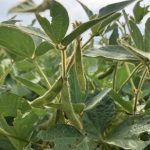Manitoba beekeepers are trying to take the sting out of low honey prices by raising awareness of their product and how it is labelled.
Three years ago, the average price for bulk honey was about $2 per pound. Prices today are less than half that.
“The beekeepers are really starting to feel the crunch and they’re recognizing that they’re losing market share in Canada,” said Manitoba provincial apiarist Rheal Lafreniere.
To counter that trend, beekeepers are drawing consumer attention to the differences in taste and quality between domestic and imported honey. They also are trying to make consumers aware that the labelling of honey on grocery store shelves can be misleading.
Read Also

Russian wheat exports start to pick up the pace
Russia has had a slow start for its 2025-26 wheat export program, but the pace is starting to pick up and that is a bearish factor for prices.
“We have to market smarter and we have to market better,” said Charles Polcyn, president of the Red River Apiarists Association.
“We’re trying to get the public to understand how honey is classified and we also want some accuracy in labelling.”
Polcyn said consumers often assume that a carton of honey labelled Canada No. 1 is pure Canadian honey, but that is not the case. A blend of imported honey could be included in the product.
Beekeepers want the Canadian Food Inspection Agency to change the rules so that the Canada No. 1 label can be used only on honey that is 100 percent Canadian. They also want the labelling changed so that consumers can more easily tell whether they are getting a blend of domestic and imported honey.
“If it’s a blended product, it can’t be in a tiny little font,” Lafreniere said. “It needs to be of a substantial size so that it is easily recognizable.”
Polcyn is also concerned by products that contain little or no honey but are marketed to give the impression that they do, usually by having the word “honey” featured prominently on the packaging.
A honey show at a Winnipeg shopping centre this fall was part of the effort to heighten consumer awareness of what makes Canadian honey distinct. Beekeepers displayed the many varieties of honey produced in Manitoba. Consumers visiting the mid-October show also could take part in a quiz about how honey is labelled.
“We got a lot of people who were surprised by what they were actually purchasing,” Lafreniere said.














